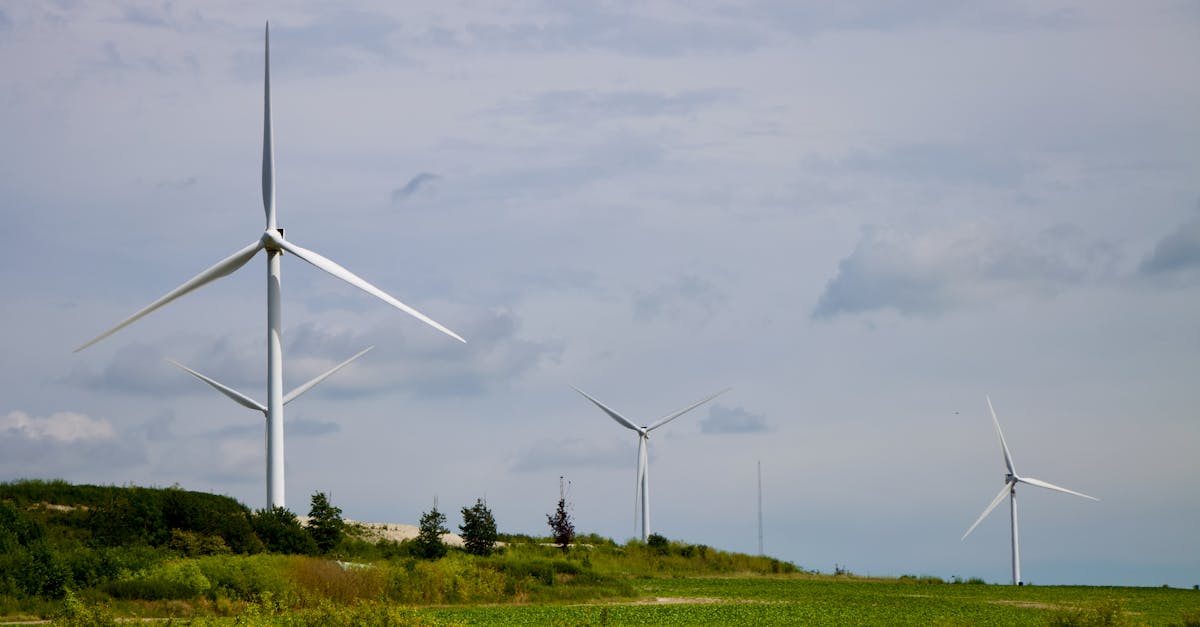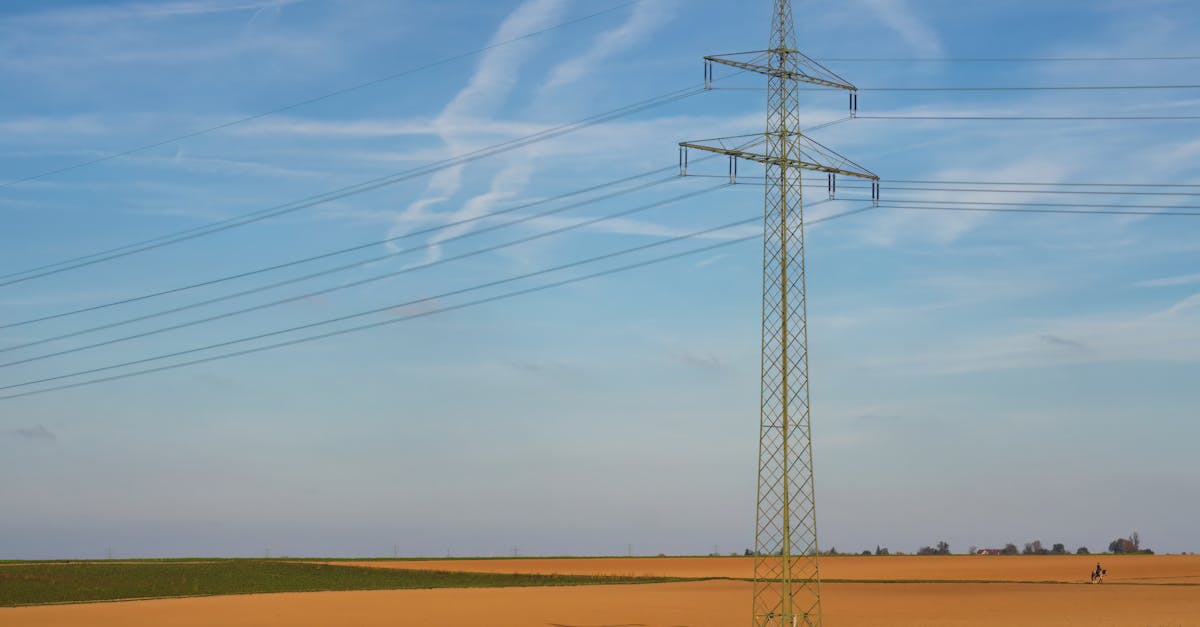Global Energy Crisis: Power Strategies Rethinking in 2025
Introduction
As the world navigates 2025, the global energy crisis emerges as one of the most pressing challenges countries face today. The expanding energy demands, juxtaposed with dwindling natural resources, compel nations to re-evaluate their power strategies earnestly. At the heart of this crisis is the growing realization that traditional energy sources are unsustainable in the long term. Nations are under pressure to innovate and pivot towards cleaner energy solutions while balancing economic growth and environmental protection. The current geopolitical landscape further complicates global energy dynamics, necessitating collaborative international efforts. As countries explore different pathways, the scope and potential of their responses hold the promise to transform global energy paradigms.
Advertisement
Emergence of Renewable Energy
The shift towards renewable energy sources is gaining significant momentum as countries seek to address the global energy crisis head-on. Solar, wind, hydro, and geothermal energies are becoming integral elements of national energy strategies. Advances in technology have drastically improved the efficiency and affordability of renewable energy, making it more accessible than ever. Nations that were once heavily reliant on fossil fuels are now investing in large-scale renewable projects, driven by both necessity and opportunity. This transition not only promises a sustainable future but also paves the way for economic expansion in green technology sectors. As countries increase their renewable energy footprints, the global carbon footprint could potentially see a substantial reduction by mid-decade.

Ryan Gong/Pexels
Advertisement
Nuclear Power: A Controversial Solution
Among the array of options to combat the energy crisis, nuclear power remains a contentious yet pivotal player. While plagued by concerns over safety and waste management, nuclear energy provides an abundant and low-carbon emission solution. Countries like France and South Korea exemplify effective nuclear energy integration, showcasing its potential role in national grids. However, public perception and historical controversies continue to cast shadows over widespread adoption. The refinement of modern nuclear technology is addressing these fears, with small modular reactors (SMRs) emerging as potentially safer alternatives. Global discourse on nuclear power remains polarized, yet its role in achieving energy security is undeniable amidst the challenging landscape of 2025.
Advertisement
Energy Efficiency Innovations
Innovation in energy efficiency is proving just as crucial as sourcing new energy. Countries are emphasizing improving infrastructure efficiency, reducing wastage, and optimizing current energy use. The rise of smart grids is becoming a game-changer in how electricity is distributed, ensuring minimal losses and adaptive usage. Additionally, the push for energy-efficient appliances and industrial processes not only lessens energy demands but also cultivates a culture of conservation. Nations are encouraging citizens and corporations to embrace these technologies, further underlining their commitment to sustainable energy consumption. With policies advocating for energy-efficient buildings and transportation systems, countries are crafting resilient frameworks in the face of the energy crisis.
Advertisement
Policy and Global Cooperation
Proactive policy-making and global cooperation are crucial keystones in addressing the energy crisis. Countries are formulating comprehensive energy policies that align with international climate agreements such as the Paris Agreement. Collaborative efforts through forums like the International Energy Agency or regional coalitions help share best practices, technologies, and resources. Efforts are also being directed towards creating policies incentivizing private sector investment in renewable energies and innovation. The notion of energy as a shared global challenge is gaining acceptance, prompting nations to work collectively towards reducing greenhouse gas emissions. An integrated approach with open dialogue ensures countries are not working in isolation but rather synergistically addressing the challenges posed by the energy crisis.
Advertisement
Digitalization of the Energy Sector
As technology permeates lives, the digital transformation of the energy sector is reshaping how countries manage power. The rise of the Internet of Energy (IoE) integrates IoT devices into the energy grid, allowing for real-time data management and optimization. From predictive analytics to AI-driven energy management systems, new technologies provide tools to forecast demand/supply dynamics accurately. Countries can now respond more adeptly to consumption peaks, ensuring uninterrupted supply and increased energy security. Groundbreaking applications like blockchain in energy trading and virtual power plants further democratize and decentralize energy management. These advancements pave the way for a more resilient and responsive energy sector, better equipped to tackle 21st-century challenges.
Advertisement
Decentralized Energy Systems
Shifting from centralized to decentralized energy systems signals a fundamental change in power distribution strategies. Distributed energy resources (DERs) like rooftop solar, wind turbines, and local microgrids reduce dependence on national grids and enhance energy independence. Communities around the world are harnessing this shift, empowering them to produce and consume their own energy. This empowerment not only enhances energy security but also promotes economic resilience, particularly in remote areas with unreliable central energy supplies. Countries embracing decentralization are witnessing novel economic activities and job creation, a promising aspect amidst global economic uncertainties. However, ensuring regulatory frameworks accompany technological advancements remains integral for sustainable progress.
Advertisement
Challenges in Transition
Transitioning energy systems, albeit necessary, is fraught with multifaceted challenges. For starters, financial constraints play a significant role; the cost of technology development and infrastructure overhaul can be prohibitive for many countries. While international funding and investments offer support, disparities in financial access remain pronounced between developed and developing nations. The political landscape adds another layer of complexity, where bureaucratic hurdles can hinder the expeditious implementation of energy reforms. Also, achieving balance between energy affordability and sustainability often creates tension. Yet, despite these hindrances, countries remain determined to navigate the intricate path towards energy resilience, innovating at every turn to circumvent obstacles.
Advertisement
Community Engagement and Awareness
Engaging communities and raising awareness about energy transformation are paramount in driving meaningful change. Countries that prioritize education and transparent communication about energy strategies see stronger public support, essential for policy acceptance. Grassroots initiatives emphasize renewable energy benefits, fostering a citizen-centric approach that encourages community involvement in energy conservation. Educational campaigns in schools and public forums aim to engender a culture of energy responsibility, fostering future generations concerned with sustainability. Public cooperation ensures smoother transitions and supports governments and industries’ dialogue on renewable energy initiatives. Countries' efforts in building equitable and inclusive frameworks contribute to a successful fight against the global energy crisis, one informed citizen at a time.
Advertisement
Summary and Conclusion
As we approach 2025, the global energy crisis is pressing countries to rethink and adapt their power strategies across multiple dimensions. Tackling the challenges entails embracing renewable energy, enhancing energy efficiency, and fostering global cooperation. Addressing nuclear energy's contentious position and promoting technology-driven solutions underpin resilient strategies. Despite challenges, countries' change trajectory remains hopeful, driven by innovative solutions and proactive policy-making. As nations continue to forge solutions, they move closer to ensuring a sustainable and balanced energy future that adequately serves a rapidly growing global population.
Advertisement



